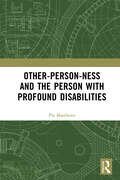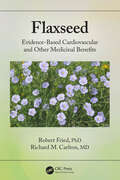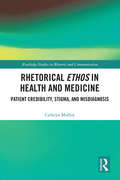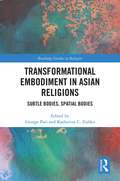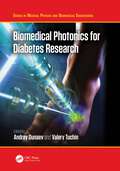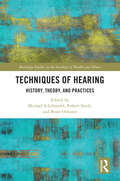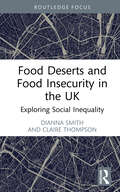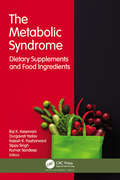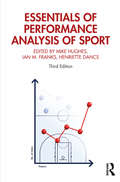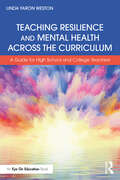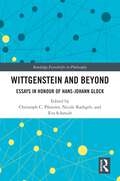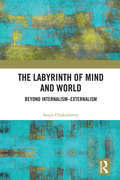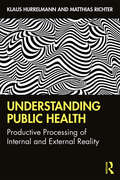- Table View
- List View
Other-person-ness and the Person with Profound Disabilities
by Pia MatthewsMany people think that profound disability presents us with a real problem, often because it seems difficult to connect with someone who does not seem to think or act like us. Positioning profound disability in this way immediately sets up a ‘them’ and ‘us’, where the person with profound disability becomes the problematic ‘other’. Attempts to bridge the ‘them’ and ‘us’ risk reducing everyone to the same where disability is not taken seriously.In contrast to a ‘them’ and ‘us’, and negative connotations of the other found in the existentialist philosophies of writers like Sartre and Beauvoir, Pia Matthews argues for a return to a positive view of the other. One positive approach to the other, based on an ethics of relationship as championed by Levinas, seems to mitigate the other-ness of profound disability. However, this still makes the person with profound disability dependent on the ethical concern of the more powerful other. Instead, this book argues for return to a personalist philosophy of being offered by Mounier, Marcel, and Wojtyła, and deepened by participation, belonging, and the possibility of contributing to the good of all. This deepened philosophy of being gives a more solid foundation for people who are especially at the mercy of others. It will be of interest to all scholars and students of disability studies, philosophy and anthropology.
Other-person-ness and the Person with Profound Disabilities
by Pia MatthewsMany people think that profound disability presents us with a real problem, often because it seems difficult to connect with someone who does not seem to think or act like us. Positioning profound disability in this way immediately sets up a ‘them’ and ‘us’, where the person with profound disability becomes the problematic ‘other’. Attempts to bridge the ‘them’ and ‘us’ risk reducing everyone to the same where disability is not taken seriously.In contrast to a ‘them’ and ‘us’, and negative connotations of the other found in the existentialist philosophies of writers like Sartre and Beauvoir, Pia Matthews argues for a return to a positive view of the other. One positive approach to the other, based on an ethics of relationship as championed by Levinas, seems to mitigate the other-ness of profound disability. However, this still makes the person with profound disability dependent on the ethical concern of the more powerful other. Instead, this book argues for return to a personalist philosophy of being offered by Mounier, Marcel, and Wojtyła, and deepened by participation, belonging, and the possibility of contributing to the good of all. This deepened philosophy of being gives a more solid foundation for people who are especially at the mercy of others. It will be of interest to all scholars and students of disability studies, philosophy and anthropology.
Flaxseed: Evidence-based Cardiovascular and other Medicinal Benefits
by Robert Fried Richard CarltonPhysicians, scientists and savvy laypeople want reliable information on foods and supplements which might improve the outcome in chronic diseases that otherwise shorten our lives. These health conditions include type 2 diabetes, heart attacks, high blood pressure, chronic kidney disease and others. Incorporating flaxseed into one's diet can greatly improve outcomes in various health conditions. Thousands of peer-reviewed articles have been published documenting the clinical efficacy of flaxseed as a whole or its individual components and reveal the mechanisms by which those various components work. Flaxseed: Evidence-Based Cardiovascular and Other Medicinal Benefits is an encyclopedic and definitive text describing the health benefits of this humble plant. The book features exquisite detail on the three major components of the plant that are responsible for most of the documented benefits, those components being omega-3 fatty acids and two compounds that increase endothelial production of nitric oxide, those compounds being the amino acid L-arginine, and cyanogenic glycosides. Attention Readers: If you are not already familiar with the health benefits of omega-3 fatty acids and of the above-named nitric oxide donors, then this book opens a vast world of scientific discovery that one can immediately apply to improving health. This book calls attention to a wealth of journal articles providing practical information on consuming flaxseed and its overall health benefits. Enjoy!
Flaxseed: Evidence-based Cardiovascular and other Medicinal Benefits
by Robert Fried Richard CarltonPhysicians, scientists and savvy laypeople want reliable information on foods and supplements which might improve the outcome in chronic diseases that otherwise shorten our lives. These health conditions include type 2 diabetes, heart attacks, high blood pressure, chronic kidney disease and others. Incorporating flaxseed into one's diet can greatly improve outcomes in various health conditions. Thousands of peer-reviewed articles have been published documenting the clinical efficacy of flaxseed as a whole or its individual components and reveal the mechanisms by which those various components work. Flaxseed: Evidence-Based Cardiovascular and Other Medicinal Benefits is an encyclopedic and definitive text describing the health benefits of this humble plant. The book features exquisite detail on the three major components of the plant that are responsible for most of the documented benefits, those components being omega-3 fatty acids and two compounds that increase endothelial production of nitric oxide, those compounds being the amino acid L-arginine, and cyanogenic glycosides. Attention Readers: If you are not already familiar with the health benefits of omega-3 fatty acids and of the above-named nitric oxide donors, then this book opens a vast world of scientific discovery that one can immediately apply to improving health. This book calls attention to a wealth of journal articles providing practical information on consuming flaxseed and its overall health benefits. Enjoy!
Rhetorical Ethos in Health and Medicine: Patient Credibility, Stigma, and Misdiagnosis (Routledge Studies in Rhetoric and Communication)
by Cathryn MolloyThis book explores rhetorical ethos and its ongoing role in patients’ credibility and in misdiagnoses stemming from gender, race and class-based biases. Drawing on the concept of ethos as a theoretical framework, it explores health and mental illness across different conditions and across different methodological approaches. Extending work on ethos in clinical encounters and public discourse about biomedicine and presenting new research on the rhetoric of mental health, stigma and mental illness, the book explores how bias in clinical settings can lead to symptoms labelled "in the patient’s head" masking treatable medical problems. This notable contribution to the rhetoric of health and medicine will be of interest to all researchers and graduate students of rhetoric and composition studies, rhetoric of health and medicine, disability studies, medical humanities, communication, and psychology.
Rhetorical Ethos in Health and Medicine: Patient Credibility, Stigma, and Misdiagnosis (Routledge Studies in Rhetoric and Communication)
by Cathryn MolloyThis book explores rhetorical ethos and its ongoing role in patients’ credibility and in misdiagnoses stemming from gender, race and class-based biases. Drawing on the concept of ethos as a theoretical framework, it explores health and mental illness across different conditions and across different methodological approaches. Extending work on ethos in clinical encounters and public discourse about biomedicine and presenting new research on the rhetoric of mental health, stigma and mental illness, the book explores how bias in clinical settings can lead to symptoms labelled "in the patient’s head" masking treatable medical problems. This notable contribution to the rhetoric of health and medicine will be of interest to all researchers and graduate students of rhetoric and composition studies, rhetoric of health and medicine, disability studies, medical humanities, communication, and psychology.
Transformational Embodiment in Asian Religions: Subtle Bodies, Spatial Bodies (Routledge Studies in Religion)
by George Pati Katherine ZubkoThis volume examines several theoretical concerns of embodiment in the context of Asian religious practice. Looking at both subtle and spatial bodies, it explores how both types of embodiment are engaged as sites for transformation, transaction and transgression. Collectively bridging ancient and modern conceptualizations of embodiment in religious practice, the book offers a complex mapping of how body is defined. It revisits more traditional, mystical religious systems, including Hindu Tantra and Yoga, Tibetan Buddhism, Bon, Chinese Daoism and Persian Sufism and distinctively juxtaposes these inquiries alongside analyses of racial, gendered, and colonized bodies. Such a multifaceted subject requires a diverse approach, and so perspectives from phenomenology and neuroscience as well as critical race theory and feminist theology are utilised to create more precise analytical tools for the scholarly engagement of embodied religious epistemologies. This a nuanced and interdisciplinary exploration of the myriad issues around bodies within religion. As such it will be a key resource for any scholar of Religious Studies, Asian Studies, Anthropology, Sociology, Philosophy, and Gender Studies.
Transformational Embodiment in Asian Religions: Subtle Bodies, Spatial Bodies (Routledge Studies in Religion)
by George Pati Katherine ZubkoThis volume examines several theoretical concerns of embodiment in the context of Asian religious practice. Looking at both subtle and spatial bodies, it explores how both types of embodiment are engaged as sites for transformation, transaction and transgression. Collectively bridging ancient and modern conceptualizations of embodiment in religious practice, the book offers a complex mapping of how body is defined. It revisits more traditional, mystical religious systems, including Hindu Tantra and Yoga, Tibetan Buddhism, Bon, Chinese Daoism and Persian Sufism and distinctively juxtaposes these inquiries alongside analyses of racial, gendered, and colonized bodies. Such a multifaceted subject requires a diverse approach, and so perspectives from phenomenology and neuroscience as well as critical race theory and feminist theology are utilised to create more precise analytical tools for the scholarly engagement of embodied religious epistemologies. This a nuanced and interdisciplinary exploration of the myriad issues around bodies within religion. As such it will be a key resource for any scholar of Religious Studies, Asian Studies, Anthropology, Sociology, Philosophy, and Gender Studies.
Biomedical Photonics for Diabetes Research (Series in Medical Physics and Biomedical Engineering)
by Andrey Dunaev Valery TuchinIn 2021, over 537 million people worldwide were diagnosed with diabetes, according to the International Diabetes Federation and so the diagnosis, care and treatment of patients with diabetes mellitus have become one of the highest healthcare priorities. Biomedical photonics methods have been found to significantly improve and assist in the diagnosis of various disorders and complications arising from diabetes. These methods have also been widely used in various studies in the field of diabetes, including in the assessment of biochemical characteristics, metabolic processes, and microcirculation that are impaired in this disease. This book provides an introduction to methods of biomedical photonics. The chapters, written by world-leading experts, cover a wide range of issues, including the theoretical basis of different biophotonics methods and practical issues concerning the conduction of experimental studies to diagnose disorders associated with diabetes. It provides a comprehensive summary of the recent advances in biomedical optics and photonics in the study of diabetes and related complications. This book will be of interest to biomedical physicists and researchers, in addition to practicing doctors and endocrinologists looking to explore new instrumental methods for monitoring the effectiveness of patient treatment. Features • The first collective book combining accumulated knowledge and experience in the field of diabetes research using biophotonics. • Contributions from leading experts in the field. • Combines the theoretical base of the described methods and approaches, as well as providing valuable practical guidance and the latest research from experimental studies.
Biomedical Photonics for Diabetes Research (Series in Medical Physics and Biomedical Engineering)
by Valery Tuchin Andrey V. DunaevIn 2021, over 537 million people worldwide were diagnosed with diabetes, according to the International Diabetes Federation and so the diagnosis, care and treatment of patients with diabetes mellitus have become one of the highest healthcare priorities. Biomedical photonics methods have been found to significantly improve and assist in the diagnosis of various disorders and complications arising from diabetes. These methods have also been widely used in various studies in the field of diabetes, including in the assessment of biochemical characteristics, metabolic processes, and microcirculation that are impaired in this disease. This book provides an introduction to methods of biomedical photonics. The chapters, written by world-leading experts, cover a wide range of issues, including the theoretical basis of different biophotonics methods and practical issues concerning the conduction of experimental studies to diagnose disorders associated with diabetes. It provides a comprehensive summary of the recent advances in biomedical optics and photonics in the study of diabetes and related complications. This book will be of interest to biomedical physicists and researchers, in addition to practicing doctors and endocrinologists looking to explore new instrumental methods for monitoring the effectiveness of patient treatment. Features • The first collective book combining accumulated knowledge and experience in the field of diabetes research using biophotonics. • Contributions from leading experts in the field. • Combines the theoretical base of the described methods and approaches, as well as providing valuable practical guidance and the latest research from experimental studies.
Techniques of Hearing: History, Theory and Practices
by Michael Schillmeier Robert Stock Beate OchsnerHearing, health and technologies are entangled in multi-faceted ways. The edited volume addresses this complex relationship by arguing that modern hearing was and is increasingly linked to and mediated by technological innovations. By providing a set of original interdisciplinary investigations that sheds new light on the history, theory and practices of hearing techniques, it is able to explore the heterogeneous entanglements of sound, hearing practices, technologies and health issues. As the first book to bring together historians, scholars from media studies, social sciences, cultural studies, acoustics and neuroscientists, the volume discusses modern technologies and their decisive impact on how ‘normal’ hearing, enhanced and smart hearing as well as hearing impairment have been configured. It brings both new insights into the histories of hearing technologies as well as allowing us to better understand how enabling hearing technologies have currently been unfolding an increasingly hybrid ecology engaging smart hearing devices and offering stress-free hearing and acoustic wellbeing in novel auditory environments. The volume will be of interest to all scholars and students of disability studies, sound studies, sociology of health and illness, medical history, health and society as well as those interested in the practices and techniques of self-monitored and smart hearing.
Techniques of Hearing: History, Theory and Practices
by Michael Schillmeier, Robert Stock, and Beate OchsnerHearing, health and technologies are entangled in multi-faceted ways. The edited volume addresses this complex relationship by arguing that modern hearing was and is increasingly linked to and mediated by technological innovations. By providing a set of original interdisciplinary investigations that sheds new light on the history, theory and practices of hearing techniques, it is able to explore the heterogeneous entanglements of sound, hearing practices, technologies and health issues. As the first book to bring together historians, scholars from media studies, social sciences, cultural studies, acoustics and neuroscientists, the volume discusses modern technologies and their decisive impact on how ‘normal’ hearing, enhanced and smart hearing as well as hearing impairment have been configured. It brings both new insights into the histories of hearing technologies as well as allowing us to better understand how enabling hearing technologies have currently been unfolding an increasingly hybrid ecology engaging smart hearing devices and offering stress-free hearing and acoustic wellbeing in novel auditory environments. The volume will be of interest to all scholars and students of disability studies, sound studies, sociology of health and illness, medical history, health and society as well as those interested in the practices and techniques of self-monitored and smart hearing.
Food Deserts and Food Insecurity in the UK: Exploring Social Inequality (Routledge Focus on Environment and Sustainability)
by Dianna Smith Claire ThompsonThis book examines the social inequalities relating to food insecurity in the UK, as well as drawing parallels with the US. Access to food in the UK, and especially access to healthy food, is a constant source of worry for many in this wealthy country. Crises, such as the COVID-19 pandemic, have coincided with a steep rise in the cost of living, meaning household food insecurity has become a reality for many more households. This book introduces a new framework to examine the many influences on local-level food inequalities, whether they result from individual circumstances or where a person lives. The framework will allow researchers new to the field to consider the many influences on food security, and to support emerging research around different sub-topics of food access and food security. Providing a thorough background to two key concepts, food deserts and food insecurity, the book documents the transition from area-based framing of food resources, to approaches which focus on household food poverty and the rise of food banks. The book invites researchers to acknowledge and explore the ever changing range of place-based factors that shape experiences of food insecurity: from transport and employment to rural isolation and local politics. By proposing a new framework for food insecurity research and by drawing on real-world examples, this book will support academic and applied researchers as they work to understand and mitigate the impacts of food insecurity in local communities. This book will be of great interest to students and scholars of food and nutrition security, public health, and sociology. It will also appeal to food policy professionals and policymakers who are working to address social inequalities and improve access to healthy and nutritious food for all.
Food Deserts and Food Insecurity in the UK: Exploring Social Inequality (Routledge Focus on Environment and Sustainability)
by Dianna Smith Claire ThompsonThis book examines the social inequalities relating to food insecurity in the UK, as well as drawing parallels with the US. Access to food in the UK, and especially access to healthy food, is a constant source of worry for many in this wealthy country. Crises, such as the COVID-19 pandemic, have coincided with a steep rise in the cost of living, meaning household food insecurity has become a reality for many more households. This book introduces a new framework to examine the many influences on local-level food inequalities, whether they result from individual circumstances or where a person lives. The framework will allow researchers new to the field to consider the many influences on food security, and to support emerging research around different sub-topics of food access and food security. Providing a thorough background to two key concepts, food deserts and food insecurity, the book documents the transition from area-based framing of food resources, to approaches which focus on household food poverty and the rise of food banks. The book invites researchers to acknowledge and explore the ever changing range of place-based factors that shape experiences of food insecurity: from transport and employment to rural isolation and local politics. By proposing a new framework for food insecurity research and by drawing on real-world examples, this book will support academic and applied researchers as they work to understand and mitigate the impacts of food insecurity in local communities. This book will be of great interest to students and scholars of food and nutrition security, public health, and sociology. It will also appeal to food policy professionals and policymakers who are working to address social inequalities and improve access to healthy and nutritious food for all.
The Metabolic Syndrome: Dietary Supplements and Food Ingredients
by Raj K. Keservani Durgavati Yadav Rajesh K. Kesharwani Sippy Singh Kumar SandeepThis new book discusses the physiological factors that contribute to metabolic syndrome within the human body and spotlights the beneficial effects on the body of nutraceuticals and functional ingredients, botanicals and natural dietary supplements, structurally numerous antioxidants, B-vitamins, and diverse amino acids and vital nutrients. The book considers the need to preserve a balance between energy delivery and strength expenditure that is essential for maintaining an appropriate body mass index (BMI), which can contribute to less obesity and fewer metabolic disorders, such as diabetes type II, cardiovascular illnesses, etc. The authors present recent research that proves that proper vitamins—including antioxidants, nutrients, micronutrients, and selected amino acids—can enhance the body’s metabolism and defend it from inflammatory onslaughts.
The Metabolic Syndrome: Dietary Supplements and Food Ingredients
by Raj K. Keservani Durgavati Yadav Rajesh K. Kesharwani Sippy Singh Kumar SandeepThis new book discusses the physiological factors that contribute to metabolic syndrome within the human body and spotlights the beneficial effects on the body of nutraceuticals and functional ingredients, botanicals and natural dietary supplements, structurally numerous antioxidants, B-vitamins, and diverse amino acids and vital nutrients. The book considers the need to preserve a balance between energy delivery and strength expenditure that is essential for maintaining an appropriate body mass index (BMI), which can contribute to less obesity and fewer metabolic disorders, such as diabetes type II, cardiovascular illnesses, etc. The authors present recent research that proves that proper vitamins—including antioxidants, nutrients, micronutrients, and selected amino acids—can enhance the body’s metabolism and defend it from inflammatory onslaughts.
Essentials of Performance Analysis in Sport: Third edition
by Mike Hughes Ian M. Franks Henriette DancsThe coaching process is about enhancing performance by providing feedback about the performance to the athlete or team. Researchers have shown that human observation and memory are not reliable enough to provide accurate and objective information for high-performance athletes. Objective measuring tools are necessary to enable the feedback process. These can take the form of video analysis systems post-event, both biomechanical and computerised notation systems, or the use of in-event systems. Essentials of Performance Analysis in Sport 3rd Edition is fully revised with updated existing chapters and the addition of 12 new chapters. It is a comprehensive and authoritative guide to this core discipline of contemporary sport science. The book offers a full description of the fundamental theory of match and performance analysis, using real-world illustrative examples and data throughout. It also explores the applied contexts in which analysis can have a significant influence on performance. To this end the book has been defined by five sections. In Section 1 the background of performance analysis is explained and Section 2 discusses methodologies used in notating sport performance. Current issues of performance analysis applied research, such as chance, momentum theory, perturbations and dynamic systems are explored in Section 3. Profiling, the essential output skill in performance analysis, is examined in depth in Section 4. The book’s final section offers invaluable applied information on careers available for performance analysts. With extended coverage of contemporary issues in performance analysis and contributions from leading performance analysis researchers and practitioners, Essentials of Performance Analysis in Sport 3rd Edition is a complete textbook for any performance analysis course, as well as an invaluable reference for sport science or sport coaching students and researchers, and any coach, analyst or athlete looking to develop their professional insight.
Essentials of Performance Analysis in Sport: Third edition
by Mike Hughes Ian M. Franks Henriette DancsThe coaching process is about enhancing performance by providing feedback about the performance to the athlete or team. Researchers have shown that human observation and memory are not reliable enough to provide accurate and objective information for high-performance athletes. Objective measuring tools are necessary to enable the feedback process. These can take the form of video analysis systems post-event, both biomechanical and computerised notation systems, or the use of in-event systems. Essentials of Performance Analysis in Sport 3rd Edition is fully revised with updated existing chapters and the addition of 12 new chapters. It is a comprehensive and authoritative guide to this core discipline of contemporary sport science. The book offers a full description of the fundamental theory of match and performance analysis, using real-world illustrative examples and data throughout. It also explores the applied contexts in which analysis can have a significant influence on performance. To this end the book has been defined by five sections. In Section 1 the background of performance analysis is explained and Section 2 discusses methodologies used in notating sport performance. Current issues of performance analysis applied research, such as chance, momentum theory, perturbations and dynamic systems are explored in Section 3. Profiling, the essential output skill in performance analysis, is examined in depth in Section 4. The book’s final section offers invaluable applied information on careers available for performance analysts. With extended coverage of contemporary issues in performance analysis and contributions from leading performance analysis researchers and practitioners, Essentials of Performance Analysis in Sport 3rd Edition is a complete textbook for any performance analysis course, as well as an invaluable reference for sport science or sport coaching students and researchers, and any coach, analyst or athlete looking to develop their professional insight.
Teaching Resilience and Mental Health Across the Curriculum: A Guide for High School and College Teachers
by Linda Yaron WestonWritten by a teacher for teachers, Teaching Resilience and Mental Health Across the Curriculum is an integrative approach to pedagogy for educators at the high school and college level to survive, thrive, and sustain in the profession. Blending theory, research, and practice for a comprehensive program for teachers to incorporate well-being tools into the classroom, each of the book’s five foundations includes engaging information, strategies, real-world examples, interactive reflection questions, and activities that can be directly applied to teaching and life. Practical guidance in designing real-world curriculum is offered alongside accessible strategies for engagement, investment, and active learning in student-centered classrooms. An essential guide for teachers, it includes techniques for incorporating well-being that are grounded in culturally responsive teaching, trauma-informed instruction, mental health, resilience, and emotional literacy. Teachers will also gain insight on how to make the career sustainable through practices for self-compassion and authentic self-care so they can not only survive, but flourish in and out of school. For all the challenges that students and teachers face, this book defines what it means, and what it takes, to teach in today’s classrooms.
Teaching Resilience and Mental Health Across the Curriculum: A Guide for High School and College Teachers
by Linda Yaron WestonWritten by a teacher for teachers, Teaching Resilience and Mental Health Across the Curriculum is an integrative approach to pedagogy for educators at the high school and college level to survive, thrive, and sustain in the profession. Blending theory, research, and practice for a comprehensive program for teachers to incorporate well-being tools into the classroom, each of the book’s five foundations includes engaging information, strategies, real-world examples, interactive reflection questions, and activities that can be directly applied to teaching and life. Practical guidance in designing real-world curriculum is offered alongside accessible strategies for engagement, investment, and active learning in student-centered classrooms. An essential guide for teachers, it includes techniques for incorporating well-being that are grounded in culturally responsive teaching, trauma-informed instruction, mental health, resilience, and emotional literacy. Teachers will also gain insight on how to make the career sustainable through practices for self-compassion and authentic self-care so they can not only survive, but flourish in and out of school. For all the challenges that students and teachers face, this book defines what it means, and what it takes, to teach in today’s classrooms.
Wittgenstein and Beyond: Essays in Honour of Hans-Johann Glock (Routledge Festschrifts in Philosophy)
by Christoph C. Pfisterer Nicole Rathgeb Eva SchmidtThis volume celebrates the work of Hans-Johann Glock, a philosopher renowned for both his exegesis of Wittgenstein and his many contributions to debates in contemporary philosophy. It brings together 16 new essays by up-and-coming and distinguished philosophers engaging with Glock’s work, and it concludes with a "Reflections and Replies" chapter in which Glock responds to his interlocutors. Glock’s distinctive philosophical voice features a rare combination of a Wittgenstein-inspired approach with a willingness to break away from Wittgenstein to tackle problems in an open-minded way. The broad selection of essays included in this volume reflects Glock’s wide-ranging philosophical interests and demonstrates the potential of applying Wittgensteinian insights to advance current systematic debates in philosophy. The chapters discuss Wittgenstein’s philosophy, metaphilosophy, truth and language, animal minds and agency, and reasons and normativity. Wittgenstein and Beyond will appeal to scholars and advanced students working on Wittgenstein, metaphilosophy, philosophy of mind, and philosophy of language.
Wittgenstein and Beyond: Essays in Honour of Hans-Johann Glock (Routledge Festschrifts in Philosophy)
by Christoph C. Pfisterer Nicole Rathgeb Eva SchmidtThis volume celebrates the work of Hans-Johann Glock, a philosopher renowned for both his exegesis of Wittgenstein and his many contributions to debates in contemporary philosophy. It brings together 16 new essays by up-and-coming and distinguished philosophers engaging with Glock’s work, and it concludes with a "Reflections and Replies" chapter in which Glock responds to his interlocutors. Glock’s distinctive philosophical voice features a rare combination of a Wittgenstein-inspired approach with a willingness to break away from Wittgenstein to tackle problems in an open-minded way. The broad selection of essays included in this volume reflects Glock’s wide-ranging philosophical interests and demonstrates the potential of applying Wittgensteinian insights to advance current systematic debates in philosophy. The chapters discuss Wittgenstein’s philosophy, metaphilosophy, truth and language, animal minds and agency, and reasons and normativity. Wittgenstein and Beyond will appeal to scholars and advanced students working on Wittgenstein, metaphilosophy, philosophy of mind, and philosophy of language.
The Labyrinth of Mind and World: Beyond Internalism–Externalism
by Sanjit ChakrabortyThis book carries forward the discourse on the mind’s engagement with the world. It reviews the semantic and metaphysical debates around internalism and externalism, the location of content and the indeterminacy of meaning in language. The volume analyzes the writings of Jackson, Chomsky, Putnam, Quine, Bilgrami and others, to reconcile opposing theories of language and the mind. It ventures into Cartesian ontology and Fregean semantics to understand how mental content becomes world-oriented in our linguistic communication. Further, the author explores the liaison between the mind and the world from the phenomenological perspective, particularly, Husserl’s linguistic turn and Heidegger’s intersubjective entreaty for Dasein. The book conceives of thought as a biological and socio-linguistic product which engages with the mind-world question through the conceptual and causal apparatuses of language. A major intervention in the field of philosophy of language, this book will be useful for scholars and researchers interested in philosophy, phenomenology, epistemology and metaphysics.
The Labyrinth of Mind and World: Beyond Internalism–Externalism
by Sanjit ChakrabortyThis book carries forward the discourse on the mind’s engagement with the world. It reviews the semantic and metaphysical debates around internalism and externalism, the location of content and the indeterminacy of meaning in language. The volume analyzes the writings of Jackson, Chomsky, Putnam, Quine, Bilgrami and others, to reconcile opposing theories of language and the mind. It ventures into Cartesian ontology and Fregean semantics to understand how mental content becomes world-oriented in our linguistic communication. Further, the author explores the liaison between the mind and the world from the phenomenological perspective, particularly, Husserl’s linguistic turn and Heidegger’s intersubjective entreaty for Dasein. The book conceives of thought as a biological and socio-linguistic product which engages with the mind-world question through the conceptual and causal apparatuses of language. A major intervention in the field of philosophy of language, this book will be useful for scholars and researchers interested in philosophy, phenomenology, epistemology and metaphysics.
Understanding Public Health: Productive Processing of Internal and External Reality
by Klaus Hurrelmann Matthias RichterThis book develops a new model of the genesis of health, on the basis of the interplay between genetic and environmental factors. Hurrelmann and Richter build upon the basic theories of health and the popular model of salutogenesis to offer a comprehensive interdisciplinary theory of health genesis and success: Productive Processing of Reality (PPR). The authors show that health is the lifelong dynamic process of dealing with the internal reality of physical and psychological impulses and the external reality of social and material impulses. To demonstrate this, the book is split into three interconnected parts. Part A analyses the determinants of health, providing an overview of the insights of current research and the impact of socioeconomic influences and gender on health. Part B covers public health, social, learning and coping theories, all of which understand health as an interaction between people and their environment. Part C draws on these four theories to outline PPR, stressing the interrelation between physical and mental constitution and the demands of the social and mental environment, and suggesting strategies for coping with these demands during the life course. Understanding Public Health: Productive Processing of Internal and External Reality will be valuable reading for students and researchers in psychology, sociology, educational science, public health and medical science, and for policymakers in public health.
